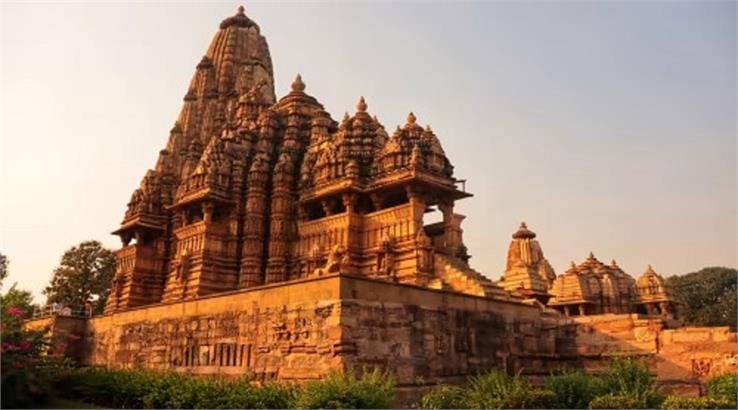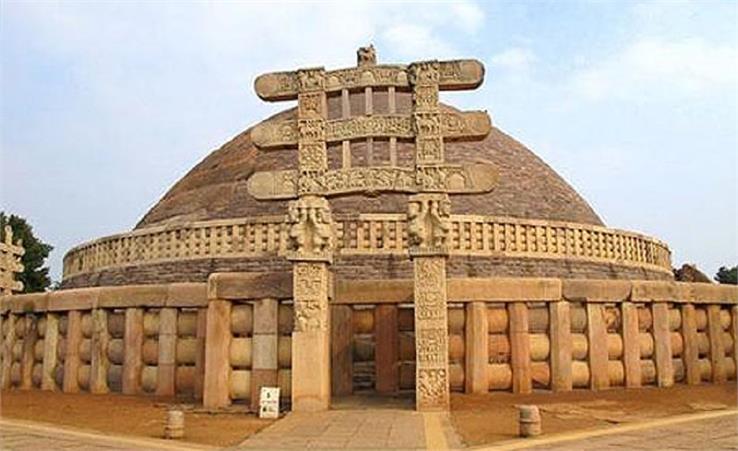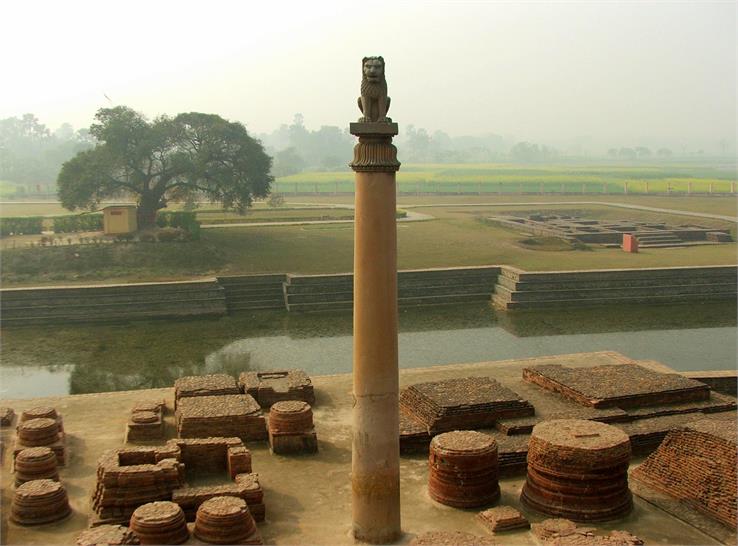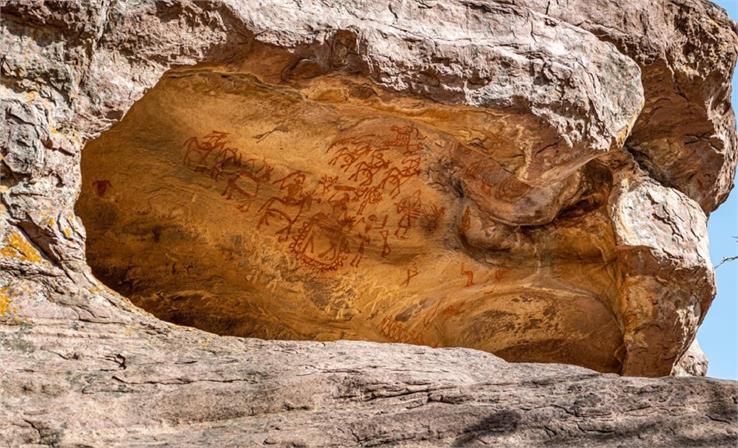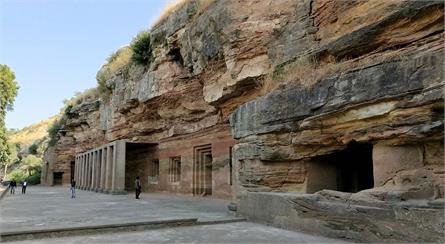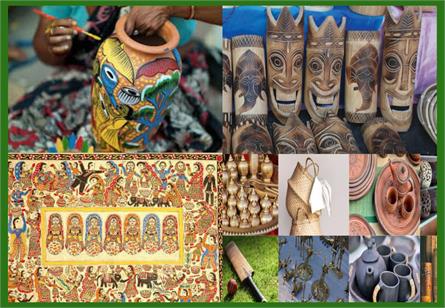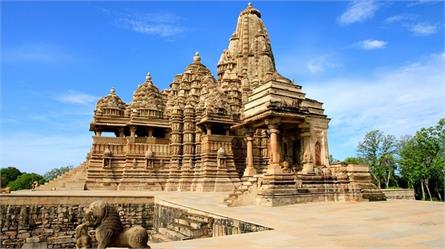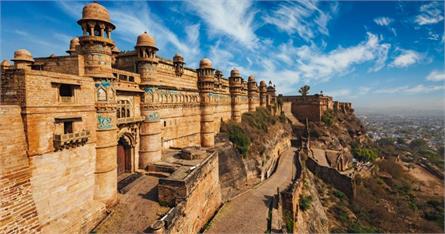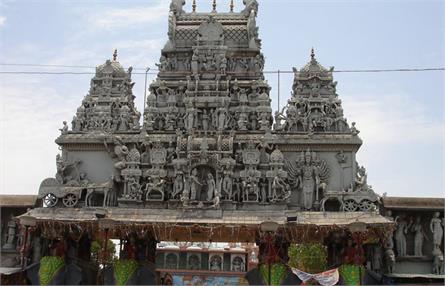World Famous Heritage Sites in Madhya Pradesh
"From faith and spirituality to tourism, from agriculture to education and skill development, Madhya Pradesh is a wonderful destination." - PM Narendra Modi.
A state rich in history and culture, Madhya Pradesh is magnificent. The state's grandeur has a rich historical past, reflected in its buildings, including palaces and temples, as well as its stunning natural scenery. Several locations in Madhya Pradesh have been designated as UNESCO World Heritage locations due to their importance to culture and nature. From the Mauryas to the Mughals, various dynasties rose and fell in this state, leaving a treasured trove of historic temples in Madhya Pradesh, ruins, and monuments in its wake. The state has long been a hub of architecture, art, and culture, and its rich past is reflected in the variety and vitality of its traditions. As we move forward, let us dive deep into the World Heritage Sites of Madhya Pradesh. Talking about the history of various parts of India is a feeling of pride and honor.
1. Monuments in Khajuraho

The Hindu and Jain temples comprising the Khajuraho Group of Monuments were constructed between the ninth and tenth centuries. The beautiful carvings on these temples, which show scenes from Hindu mythology and traditional Indian life, are well renowned. They are mentioned among the best examples of medieval Indian art and architecture.
Three Divisions
The three divisions are the Western, Eastern, and Southern groups of temples at Khajuraho. The Kandariya Mahadev Temple, Chaunsath Yogini Temple, and Lakshmana Temple are only a few of the most beautiful temples in the Western group of temples, which is the largest and most well-known.
The most exquisite temple in Khajuraho is the Kandariya Mahadev Temple, which honors Lord Shiva. The temple is embellished with more than 800 sculptures that represent various incidents from Hindu mythology, including the conflict between Lord Shiva and the demon Ravana. The temple is tall, with its shikhara (spire) rising to 31 meters.
One of the earliest temples in Khajuraho, the Chausath Yogini Temple, was built in the ninth century. The temple, the only one made entirely of granite in Khajuraho, is devoted to the 64 yoginis, or female followers of Goddess Kali. The temple is circular, with an open courtyard in the middle, and it has ornate carvings and sculptures all over it.
Also Read - Most famous handicrafts of Madhya Pradesh
Another exquisite temple in Khajuraho, the Lakshmana Temple, is devoted to Lord Vishnu. The temple is renowned for its magnificent sculptures, which depict numerous events from Lord Vishnu's life, including his incarnation as Lord Rama and his triumph over the demonic ruler Bali.
The sculptures and carvings at Khajuraho are a testament to ancient India's extensive and profound cultural and aesthetic traditions. Khajuraho is a significant center of art and culture. The Khajuraho temples are a remarkable example of medieval India's aesthetic and architectural genius. They are a must-visit for everyone interested in learning about India's history since they provide a window into the nation's rich cultural heritage.
2. Sanchi Stupa

A historic Buddhist structure known as Sanchi Stupa proudly stands in the town of Sanchi in Madhya Pradesh. It is regarded as a UNESCO World Heritage Site among India's oldest and most significant Buddhist sites. The stupa was initially a brick building built by Emperor Ashoka in the third century BC, but it was later enlarged and adorned with stone by other emperors.
Architecture
The stupa is a massive, 16-meter-tall hemispherical dome ornamented with four elaborate entrances (toranas), each featuring scenes from the Buddha's life. The Sanchi Stupa's magnificence is beautifully depicted through its gateways, regarded as some of the best works of ancient Indian art. The carvings on the gateways show several events in the Buddha's life, including his birth, enlightenment, and ultimate nirvana. The sculptures vividly depict the Buddha's life and teachings since they are so elaborate and precise.
3. Ashoka Pillar

The Ashoka Pillar, next to the stupa, is one of the most intriguing elements of the Sanchi Stupa, in addition to the entrances. With a height of 6.7 meters, the Ashoka Pillar is a large and imposing column. Its capital is a lion, used today as India's national symbol.
The Sanchi Stupa is a stunning, essential structure historically and culturally. It is one of India's oldest and most significant Buddhist sites, and it was crucial to spreading Buddhism throughout the nation. The stupa is a remarkable resource for historians and a monument to ancient India's rich artistic and architectural traditions. Sanchi Stupa is an impressive structure that provides a window into India's rich religious and cultural legacy. It is a terrific way to learn more about Buddhism and its impact in India, and it is a must-see for anybody interested in the history and architecture of the nation.
Must Read - Famous Ancient Caves Of Madhya Pradesh
4. Bhimbetka Rock Shelters
One of India'sIndia's most intriguing archaeological sites is Bhimbetka Rock Shelters, found in Madhya Pradesh. With murals that date back more than 30,000 years, these rock shelters are thought to be the oldest across the globe. Since the rock shelter was discovered in 1957 by archaeologist Dr. Vishnu Wakankar, they have drawn much attention from tourists, art enthusiasts, and history fans.
Over 700 rock paintings, which portray a variety of scenarios from the lives of early humans, including hunting, dance, and religious rites, may be found in the rock shelters. Red is one of the natural hues used in the paintings.
Window Into the Lives of Ancestors

Not only are the rock paintings at Bhimbetka stunning, but they also provide an intriguing window into the lives and cultures of our ancestors. The paintings show early human ideas, fears, and dreams in addition to their daily routines. As an illustration, some images show primitive humans engaging in religious rites, while others show fantastical creatures and otherworldly beings.
The Bhimbetka Rock Shelters are notable for their fascinating characteristics and rock paintings. One such feature is the "Auditorium Cave," which has a wide, dome-like roof that produces a natural echo. It is thought that early humans held events and performances in the cave.
In addition to being a stunning sight, the Bhimbetka Rock Shelters are also incredibly important historically and culturally. They are a priceless resource for historians and academics interested in the area's history. They are a monument to early humans' rich aesthetic and cultural traditions.
The Bhimbetka Rock Shelters are a great and distinctive archaeological site that provides an enthralling window into the lives and civilizations of our ancestors. They are a must-see for anyone curious about studying the history and artwork of the first humans and a fantastic opportunity to learn more about our history and cultural heritage.


